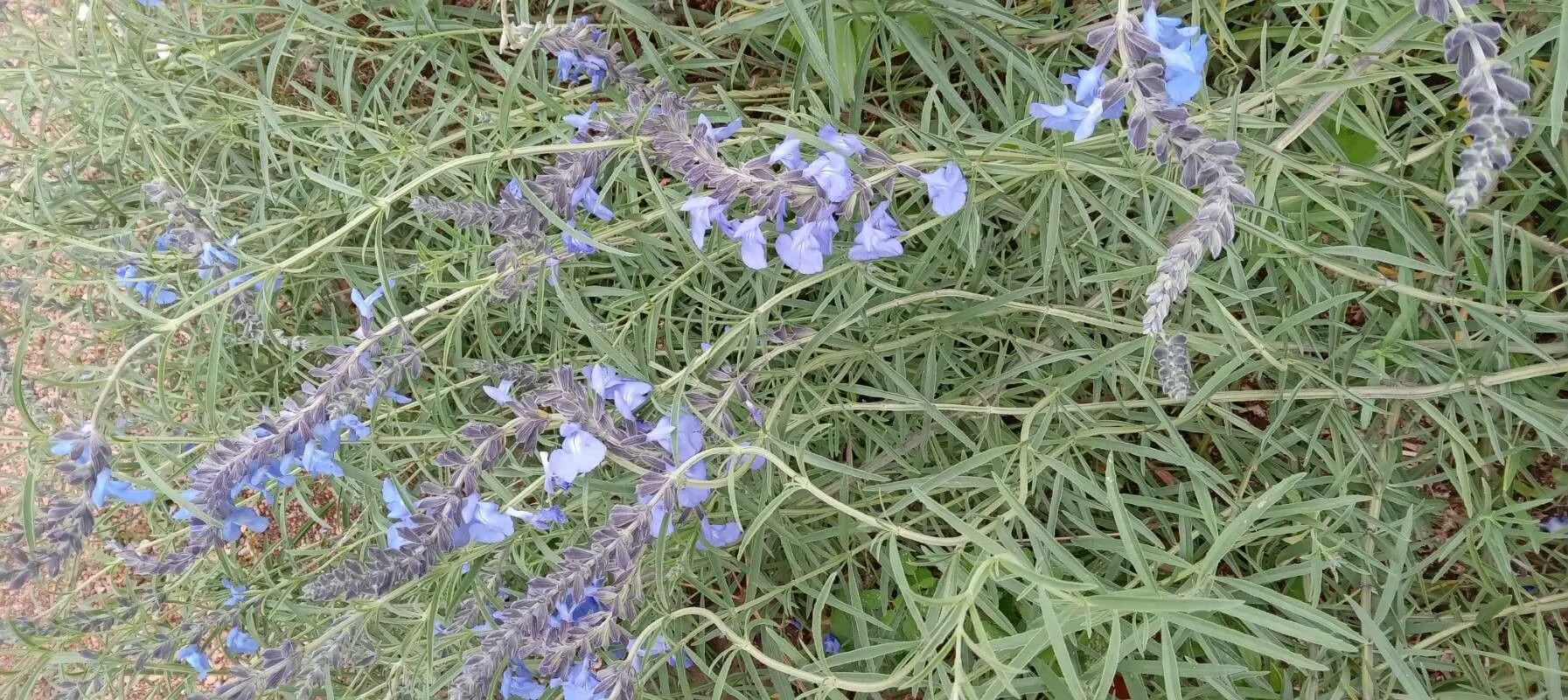
Author: Michx. ex Vahl
Bibliography: Enum. Pl. Obs. 1: 253 (1804)
Year: 1804
Status: accepted
Rank: species
Genus: Salvia
Vegetable: False
Observations: WC. & S. U.S.A.
Azure blue sage, scientifically known as Salvia azurea, is a perennial herbaceous plant belonging to the Lamiaceae family. This striking species has been captivating botanists and gardeners alike since its formal classification in 1804 by Michaux, with contributions from Vahl. Originating from the wild landscapes of the central and southern United States, Azure blue sage thrives naturally in prairies and open woodlands, contributing to the biodiversity and aesthetic appeal of these regions.
This sage is well-known for its vibrant blue flowers, which bloom from late summer to early fall. The blossoms, typically arranged in loose, spiky clusters, serve as a magnet for pollinators, including bees, butterflies, and hummingbirds. These pollinators are not only crucial for the plant’s reproduction but also enhance the ecological health of the areas where Azure blue sage is found.
The plant’s foliage consists of narrow, lance-shaped leaves that, when crushed, emit a mild, pleasant aroma characteristic of many members in the Lamiaceae family. Standing at heights between two to five feet, Salvia azurea presents a graceful silhouette that can add both structure and color to garden landscapes.
Azure blue sage is also appreciated for its resilience and ease of care. It prefers full sun and well-drained soils, making it an excellent choice for xeriscaping and low-water gardens. Once established, it can tolerate periods of drought, reducing the need for frequent irrigation and making it a sustainable option for environmentally conscious gardeners.
In addition to its role in ornamental gardening and wildlife support, Azure blue sage holds potential medicinal properties, as do many other species within the genus Salvia. While traditionally, the plant has not been as widely studied or utilized in herbal medicine as some of its relatives, its phytochemical constituents may offer health benefits worthy of further exploration.
As we continue to value and preserve native plants like Salvia azurea, we not only enhance our gardens with their beauty but also support the ecosystems that depend on them. This deep appreciation for the Azure blue sage underscores its enduring botanical and ecological significance.
En: Azure blue sage, Prarie Sage, Pitcher Sage, Blue sage
Ar: قصعين لازوردي
De: Prärie-Salbei
Taken Oct 3, 2022 by Fabrice Rubio (cc-by-sa)
Taken Oct 3, 2022 by Fabrice Rubio (cc-by-sa)
Taken Oct 1, 2021 by Gina Loyd (cc-by-sa)
Taken Mar 5, 2022 by Oliart Jorge (cc-by-sa)
Taken Jul 22, 2021 by Paige Conner (cc-by-sa)
Taken Sep 20, 2021 by jimseng jimseng (cc-by-sa)
Taken Oct 3, 2022 by Fabrice Rubio (cc-by-sa)
Taken Sep 18, 2021 by Héctor Gómez (cc-by-sa)
© copyright of the Board of Trustees of the Royal Botanic Gardens, Kew.
Taken Oct 1, 2021 by James Stevens (cc-by-sa)
Taken Oct 7, 2022 by Flavien Guidoux (cc-by-sa)
Taken Oct 3, 2022 by Fabrice Rubio (cc-by-sa)
Growth form>: Single Stem
Growth habit>: Forb/herb
Growth rate>: Rapid
Ph maximum: 8.0
Ph minimum: 6.0
Family: Myrtaceae Author: (F.Muell.) K.D.Hill & L.A.S.Johnson Bibliography: Telopea 6: 402 (1995) Year: 1995 Status:…
Family: Rubiaceae Author: Pierre ex A.Froehner Bibliography: Notizbl. Bot. Gart. Berlin-Dahlem 1: 237 (1897) Year:…
Family: Sapindaceae Author: Koidz. Bibliography: J. Coll. Sci. Imp. Univ. Tokyo 32(1): 38 (1911) Year:…
Family: Asteraceae Author: A.Gray Bibliography: Pacif. Railr. Rep.: 107 (1857) Year: 1857 Status: accepted Rank:…
Family: Fabaceae Author: Medik. Bibliography: Vorles. Churpfälz. Phys.-Ökon. Ges. 2: 398 (1787) Year: 1787 Status:…
Family: Aspleniaceae Author: (Cav.) Alston Bibliography: Bull. Misc. Inform. Kew 1932: 309 (1932) Year: 1932…